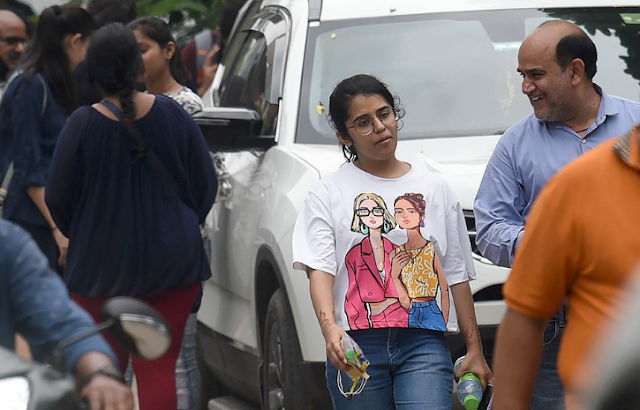Explained: Why CUET Does Not Reduce Students' Pressure?
The CUET was expected to lessen the academic pressure on students by facilitating fair, more transparent, and egalitarian admissions to elite institutions. But is it understanding as deliberate in its first 12 months, or has it merely added one extra layer to the admissions course of? Or, is it merely one extra hyper-competitive examination that students need to ace, after labouring for his or her boards? In actuality, it might have even made life harder for students and schools.
What is CUET?
The University Grants Commission declared in March that the CUET would likely be required for undergraduate admissions at all central universities. The National Testing Agency (NTA) administered the computer-based test over the course of six weeks, with tests for each topic taking place on various days. The CUET was originally planned to take place in two parts, but due to technical difficulties, the NTA was forced to extend it across six phases between mid-July and the end of August.
The test was administered in 259 Indian cities in 13 languages, including English and Hindi. It was also held in 10 cities outside the country, including New York, Singapore, Doha, and Kathmandu.
The CUET has a variety of objectives. First and foremost, it aims to give all applicants, especially those from rural and other distant locations, a fair and honest chance to get admitted to India’s best institutions and schools.
Additionally, it was anticipated that the admissions procedure would become more transparent and consistent for applicants from various boards, which frequently use various curricula and evaluation techniques. Additionally, the CUET would do away with the requirement that students take several entrance tests for various universities.
How did it fare in its first year?
The CUET has in some ways reflected the problems that colleges and schools have faced in the past. Simply stated, a remarkable number of children have passed the test. Out of the 1.49 million pupils who took the exam, 20,000 achieved a perfect score across all 30 topics. To make it easier to compare the performance of applicants who may have taken an exam on the same subject on various dates, likely with varying difficulty levels, the NTA has also worked up separate normalised scores for each candidate.
The vast number of children scoring at the 100 percentile gives you an idea of the enormous challenge schools have in selecting students, even while benefit lists by schools will likely be based primarily on the normalised rating of candidates rather than the percentile rating. It might just be as difficult as it was before, or it might even be worse, for prestigious universities and the schools that are linked with them. There have traditionally been an overwhelming number of applicants to Delhi University, Banaras Hindu University, Jawaharlal Nehru University, and Jamia Millia Islamia University.
In fact, the number of candidates at Delhi University has nearly doubled this year, from 440,000 in 2021 to roughly 800,000 in 2022. This may be because students from across the country just had to take one unified exam for all institutions.
Does the CUET bring about any changes?
As we have mentioned, colleges find the sheer amount of applicants frightening. Through CUET, there are anywhere from 150,000 to 200,000 seats available at 90 universities, but there are around 1.5 million applicants. Under a flood of events, the most coveted universities are becoming buried. Despite the 70,000 seats available at Delhi University, securing a spot at one of the elite institutions, such as St. Stephens, SRCC, or LSR, is still a frightening prospect. For instance, Stephens only offers approximately 400 seats but receives about 30,000 applications annually, admitting almost 1 in 100 applicants.
Now that they have passed the boards, pupils also have another test to ace. To help youngsters get into India’s top institutions, it may develop a private teaching or tutorial environment in India, and in fact, it already has. The Kota training facility for the JEE entry to the esteemed Indian Institutes of Technology is one example of a phenomenon we have observed with other entrance tests like the JEE and NEET.
Therefore, fixing India’s training system by adding just one more exam won’t be enough because the problems go far deeper.
What long-term solution is there?
India seeks institutions and schools of exceptionally high calibre. There are 39, 700 schools and roughly 800 universities in the country. That’s a huge number — more than the 5,300 colleges and universities in the US. However, as is common knowledge, many of India’s current educational institutions struggle to provide pupils with high-quality pedagogy and infrastructure.
India certainly intends to invest more in and expand higher education, but the federal government and the state governments cannot accomplish this on their own. It desires the non-public sector’s participation.
Reference : https://www.indiatimes.com/explainers/news/explained-why-cuet-does-not-reduce-students-pressure-581636.html

Comments
Post a Comment